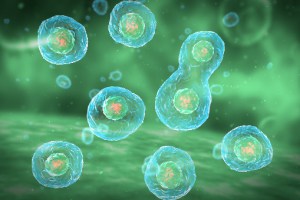What are the Steps in Cell Migration
Cell migration is an extremely important cellular process. It is the directed movement of a group of cells or a single cell when responding to chemical and mechanical signals. This fundamental process takes place throughout life and continues until death, contributing to pathogenic states in disease. This article will outline the key steps of the process and how they work.

What Causes Cell Migration?
Cell migration is necessary for many processes that take place inside the body. One example is white blood cells like neutrophils and macrophages that migrate quickly to the sites of injury or infection to combat bacteria and other germs. Cell migration is a critical element in the construction of tissues and organs and where there is a need for wound repair, connective tissue cells must move to an injury site to repair damaged tissue.
The Stages of Cell Migration
Extension of the Leading Edge
Effective cell migration requires constant forward movement of the plasma membrane that is at the leading edge of the cell. The cells must be polarized, meaning the front and back become entirely different cells.
Adhesion to Matrix Contacts
Cell-matrix adhesion is when the cells interact with the extracellular matrix, facilitated by multi-protein adhesion structures including fibrillar adhesions, focal adhesions, and podosomes. An extracellular matrix is a group of molecules that are locally secreted to guarantee tissue and cell cohesion.
Focal adhesion is an extremely important part of cell migration, it is a traction site against which cells generate tensional forces and mechanosensors that convey information about the physical attributes of the matrix.
The Contraction of the Cytoplasm
The cytoplasm within the cell then contracts to move the entire cell forward.
Release from Contact Sites
At the leading edge, older adhesions disassemble, however, some grow into more mature molecular assemblies.
Recycling of Membrane Receptors at Front and Rear
Receptor recycling involves two endosome populations sorting receptors and returning each to their appropriate plasma membrane domain.
Each of these steps is subject to one or more cyclical biochemical processes and the production of numerous in vitro and subcellular assays for critical biochemical processes has enhanced the understanding of each cycle.
Cell Migration Assays from Platypus Tech
Platypus Technologies provides cell migration assays using exclusion zone technology to allow consistent cell-free regions for every experiment. They allow for real-time monitoring, quantification with plate readers, high-content images or microscopes, and do not use artificial membranes.
To find out more about Platypus Tech’s range of cell migration assays, get in touch with the team today.